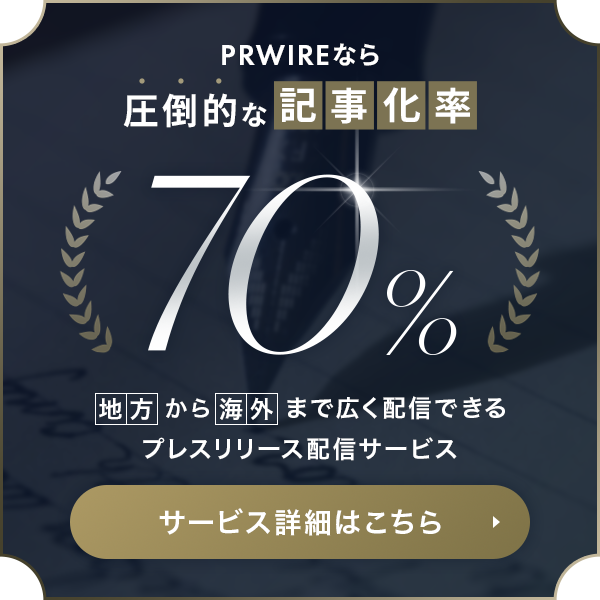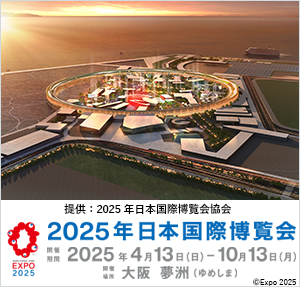Huawei Predicts 10 Trends in Smart PV for 2025
PR83212
SHENZHEN, China, March 9, 2020 /PRNewswire=KYODO JBN/ --
Over the next 5 to 10 years, renewable energy will assume a more prominent role as
a main power source for power grids. Solar power, in particular, as the most noteworthy
form of renewable energy, has a particularly bright future. However, as renewable represents
a greater proportion of total energy production, ensuring safety, reliability, and cost-effectiveness
across power generation assets will become the upmost priority.
With the rapid development of emerging ICT technologies, such as AI, cloud, big data,
and 5G, and in full consideration of the latest trends in power electronics technology,
Huawei has engaged with experts in the field and has released 10 emerging technical
trends for smart PV in 2025. These trends encompass four dimensions: lower levelized
cost of electricity (LCOE), power grid friendliness, intelligent convergence, and security
and trustworthiness. The trends aim to drive the industry toward intelligent, green solutions,
and provide insight into innovation and soaring growth in the new energy industry.
Trend 1: Digitalization
https://photos.prnasia.com/prnh/20200309/2743935-1-a
Huawei Predicts 10 Trends in Smart PV for 2025
Key point: More than 90% of global PV plants will be digitalized.
Despite the booming global PV market, there are still many dumb devices in PV plants,
from power generation to communications. These devices cannot be effectively monitored,
nor can they provide fault alarm. With the rapid development of digital technologies such as
5G and cloud, it is expected that more than 90% of PV plants will be fully digitalized by 2025,
making it possible for PV plants to be simple, intelligent, and efficient management.
Trend 2: AI-driven Smart Upgrades
https://photos.prnasia.com/prnh/20200309/2743935-1-b
Huawei Predicts 10 Trends in Smart PV for 2025
Key point: Over 70% PV plants will apply AI techniques.
The in-depth integration of AI and PV will facilitate mutual sensing and interconnection
between devices, and will improve power generation and O&M efficiency through
collaborative optimization. AI techniques can offer promising new avenues for PV systems,
including: proactive identification and protection of PV module and device faults with AI
diagnosis algorithms; tracker algorithm optimization with massive plant data and self-learning
for higher yields; and AI-aided solar-storage synergy to automatically optimize PV-storage
plant revenue. As LCOE continues to decrease and O&M complexity increases, AI techniques
will be highly likely to widely apply in PV plants.
Trend 3: Unmanned PV Plants
https://photos.prnasia.com/prnh/20200309/2743935-1-c
Huawei Predicts 10 Trends in Smart PV for 2025
Key point: More than 80% of the work in PV plants will be unmanned.
With the ascendance of AI and the Internet of Things (IoT), intelligent products and
services will bring convenience to the whole PV solution. With integrated expert experiences
and continuous self-learning, AI will be widely deployed to replace O&M experts in many
diagnostic and decision-making functions. Drone inspection and robot-based automatic
O&M will handle dangerous and repetitive O&M work that requires a continual high degree
of accuracy, for enhanced productivity and safety in PV plants. As is estimated, it is expected
that PV plants in the future will be fully unmanned.
Trend 4: Proactive Support for Power Grids
https://photos.prnasia.com/prnh/20200309/2743935-1-d
Huawei Predicts 10 Trends in Smart PV for 2025
Key point: PV plants will shift from grid-adapting to grid-supporting.
The increasing penetration level of power-electronic-interfaced energy will undermine power
grid strength, hindering the broader application of PV systems. Over the next 5 years,
PV plants must gradually evolve from adapting to the power grid, to supporting the power grid.
To this end, inverters should possess capabilities such as wide short circuit ratio (SCR) adaptability, capability to control harmonic current within 1%, consecutive high/low voltage
ride-through, and fast frequency regulation, which are necessary for grid connection.
Trend 5: Solar + Storage
https://photos.prnasia.com/prnh/20200309/2743935-1-d
Huawei Predicts 10 Trends in Smart PV for 2025
Key point: The proportion of PV systems coupled with energy storage will exceed 30%.
With the greater penetration of new energy sources, power grids will have increasingly
stringent requirements for frequency regulation and peak shaving. In the meantime,
battery costs are decreasing with technology advancement. It is projected that energy
storage will work in tandem with PV systems, and become a critical component.
Projections indicate that by 2025, the proportion of PV systems with energy storage will
exceed 30%.
Trend 6: Virtual Power Plants
https://photos.prnasia.com/prnh/20200309/2743935-1-f
Huawei Predicts 10 Trends in Smart PV for 2025
Key point: More than 80% of residential systems will connect to Virtual Power
Plant (VPP) networks.
Over the next 5 years, ICT technologies, such as 5G, blockchain, and cloud
services, will be widely applied in distributed power plants, forming VPPs for
collaborative management, and participating in the scheduling, transaction, and
auxiliary services for power systems. The development of VPP technology will
inspire new business models and attract new market players in distributed PV
scenarios, serving as an engine of growth for distributed PV.
Trend 7: Active Safety
https://photos.prnasia.com/prnh/20200309/2743935-1-g
Huawei Predicts 10 Trends in Smart PV for 2025
Key point: Arc-fault circuit interrupter (AFCI) will become a must-have feature in distributed
PV rooftop systems, and will be incorporated into international industry standards.
With the broader application of distributed PV, building and personal safety
has become a major concern. PV arcing risks caused by the poor contact of nodes
in PV modules, poor connections from PV connectors, or aged or broken cables,
have become a pressing matter in the industry. To mitigate such risks, AFCI
will become a standard function for distributed PV rooftop systems, and will be
incorporated into international industry standards.
Trend 8: Higher Power Density
https://photos.prnasia.com/prnh/20200309/2743935-1-h
Huawei Predicts 10 Trends in Smart PV for 2025
Key point: Inverter power density will increase by more than 50%.
With the trend of lower LCOE of solar, there calls higher requirements in
higher power of a single module and easy inverter maintenance. To achieve this,
higher power density is required. With breakthroughs in research of wide-bandgap
semiconductors, such as SiC and GaN, as well as advanced control algorithms,
inverter power density is expected to increase by more than 50% in the next 5 years.
Trend 9: Modular Design
https://photos.prnasia.com/prnh/20200309/2743935-1-i
Huawei Predicts 10 Trends in Smart PV for 2025
Key point: Core components such as inverters, PCS and energy storage devices
will adopt modular design.
Inverters, PCSs, and energy storage devices are key components in a PV plant,
which greatly affect the availability of the entire PV plant system. As the capacity
and complexity of PV plants increase, the traditional, expert-driven approach for
onsite maintenance will be too costly. Modular design will become mainstream,
as it enables flexible deployment, smooth expansion, and expert-free maintenance,
greatly reducing O&M costs and improving system availability.
Trend 10: Security and Trustworthiness
https://photos.prnasia.com/prnh/20200309/2743935-1-j
Huawei Predicts 10 Trends in Smart PV for 2025
Photo - https://photos.prnasia.com/prnh/20200309/2743935-1-j
Huawei Predicts 10 Trends in Smart PV for 2025
Key point: Security and Trustworthiness has become a necessary requirement for
PV plants.
The increase in the cumulative capacity of global PV plants, and greater
complexity of network architecture, which makes the network security risks of
PV plants increasing. In addition, there are more stringent requirements for
user privacy and security for distributed PV plants. All these trends suggest
that PV plants need to possess security and trustworthiness capabilities in
terms of reliability, availability, security, safety, resilience, and privacy.
Our common desire to explore as human beings, knows no limits. We are always
looking to soar to new heights, plunge to deeper depths, and seek out new truths.
The convergence of 5G, cloud, and AI technologies is shaping a world where everything is
sensed, connected, and intelligent at a speed faster than we think. By listing the top 10
trends for the PV industry for 2025, Huawei hopes to play its part in inspiring the creation
of a green, intelligent world, in which the boundless potential of new energy solutions can
be broadly shared across society.
SOURCE: Huawei
Image Attachments Links:
Link: http://asianetnews.net/view-attachment?attach-id=359537
Caption: Huawei Predicts 10 Trends in Smart PV for 2025
Link: http://asianetnews.net/view-attachment?attach-id=359540
Caption: Huawei Predicts 10 Trends in Smart PV for 2025
Link: http://asianetnews.net/view-attachment?attach-id=359542
Caption: Huawei Predicts 10 Trends in Smart PV for 2025
Link: http://asianetnews.net/view-attachment?attach-id=359543
Caption: Huawei Predicts 10 Trends in Smart PV for 2025
Link: http://asianetnews.net/view-attachment?attach-id=359544
Caption: Huawei Predicts 10 Trends in Smart PV for 2025
Link: http://asianetnews.net/view-attachment?attach-id=359545
Caption: Huawei Predicts 10 Trends in Smart PV for 2025
Link: http://asianetnews.net/view-attachment?attach-id=359546
Caption: Huawei Predicts 10 Trends in Smart PV for 2025
Link: http://asianetnews.net/view-attachment?attach-id=359547
Caption: Huawei Predicts 10 Trends in Smart PV for 2025
Link: http://asianetnews.net/view-attachment?attach-id=359548
Caption: Huawei Predicts 10 Trends in Smart PV for 2025
Link: http://asianetnews.net/view-attachment?attach-id=359549
Caption: Huawei Predicts 10 Trends in Smart PV for 2025
本プレスリリースは発表元が入力した原稿をそのまま掲載しております。また、プレスリリースへのお問い合わせは発表元に直接お願いいたします。
このプレスリリースには、報道機関向けの情報があります。
プレス会員登録を行うと、広報担当者の連絡先や、イベント・記者会見の情報など、報道機関だけに公開する情報が閲覧できるようになります。










